This informal report by the Division of Entomology & Plant Pathology is a commentary on insects, diseases, and curiosities division staff encounter on a week-to-week basis. Comments and questions about this report are welcome and can be sent to your respective Inspector.
Our Website
Inspector Territories
Kristy Stultz (Nursery Inspector & Compliance Officer) -
A quick reminder for all those selling plants inside or into Indiana. Plants listed on the Terrestrial or Aquatics Plant Rules will be destroyed. You can find a list of invasive species on our website.

I found tulip tree scale this week in an isolated population. This soft scale insect is prolific and is a key pest of tulip, magnolia, and even linden occasionally. While there are several natural enemies, treatment may be necessary. There are several options. Horticultural oil may be used in early spring after the danger of freezing is over. The crawler stage is active from mid-August through mid-September. Remember to always read and follow the label of any product used and ensure it is labeled for the pest in question.
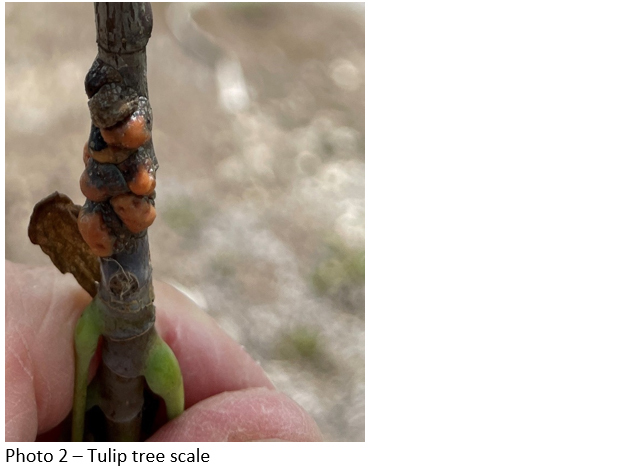
Will Drews (Nursery Inspector & Compliance Officer) -
I’ve been noticing a lot of red-headed flea beetles (Systena frontalis, RHFB) in my area, and they are causing some damage to a number of ornamental plants. RHFBs are small, shiny beetles as adults with a mostly black body and a slightly reddish head. They are called flea beetles because they jump like a dog flea when disturbed. RHFBs can be a troublesome pest in a plant nursery because they have a fairly wide host range of ornamental plants and are fairly difficult to control.
Economically important plants they feed on include hydrangeas, weigelas, roses, azaleas, viburnums, dogwoods, and more. RHFB adults feed on the foliage of the plants and can create a number of small holes, which can lead to a tattered appearance. The RHFB larvae live in the soil and will feed on the roots of the plants, but they seldom cause any damage to the plant’s overall health at this stage.
Red-headed flea beetle adults are very mobile and thus control, if warranted, can be difficult. Foliar applications of insecticides can be used on adults, but it can be difficult to get complete coverage and good control with a single application. Soil drench insecticides have been proven to be very effective at control of RHFBs at the larval stage. However, care must be taken to make sure that all the infested plants are controlled, so that the mobile adults do not come right back to the plants. For cultural control, good nursery weed control is also recommended as RHFBs can feed on a number of weedy plant species as well.
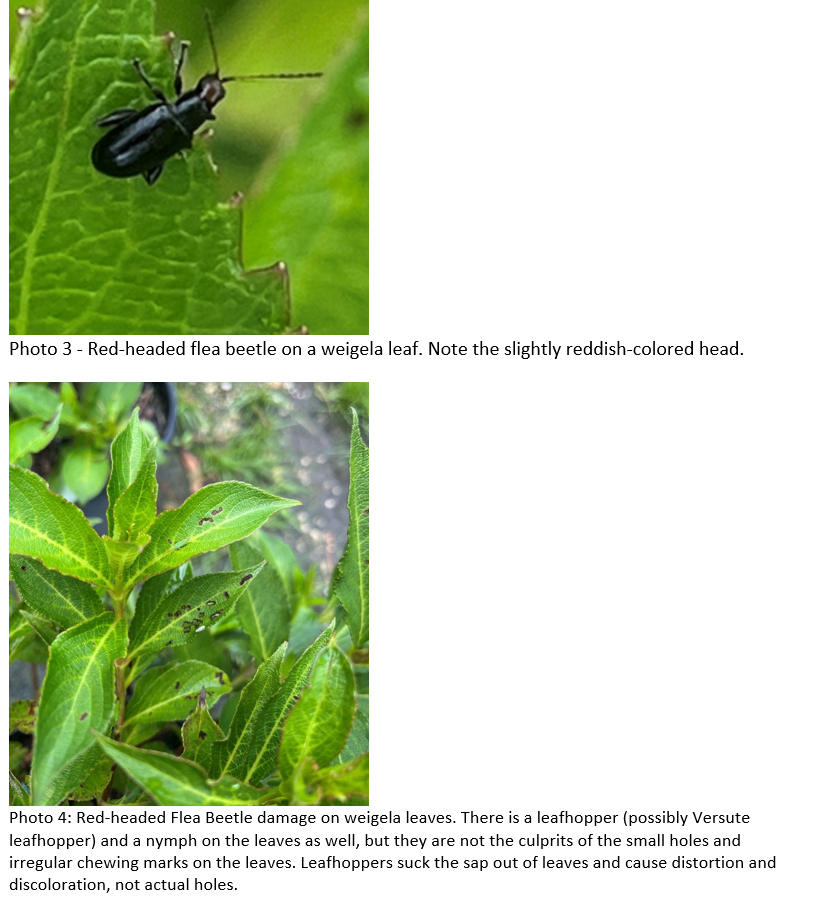
Angela Rust (Nursery Inspector & Compliance Officer) -
I had to share a fun photo of a young walking stick on a squash leaf at my house. I don’t see them very often and they have always been a favorite of mine.
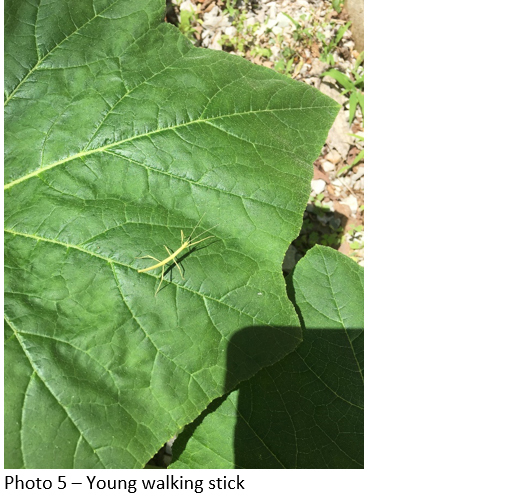
While assisting with a group nursery inspection recently I found cucumber mosaic virus (CMV) on cardinal flower (Lobelia sp.). Infection was confirmed by Immunostrip virus testing. CMV is a plant virus that can affect over 1,200 plant species worldwide, including vegetables, fruits, flowers, and weeds.
It's known for its devastating effects on members of the Cucurbit family such as cucumbers, melons, pumpkins, and squash. CMV can cause significant losses in yield and vegetable quality. Symptoms on infected plants can vary widely depending on the host. Stunting of entire plants, mosaic or mottling patterns (blotchy white, yellow, and light green areas), chlorotic ring spots on leaves and leaves with distorted shapes can all be symptoms. In extreme situations, parts of or even the entire plant may die from the disease.
CMV most commonly spreads by aphids picking up the virus as they feed on infected plants and transmitting it to healthy ones. CMV can also spread by other means. Plants confirmed to be infected should be destroyed.
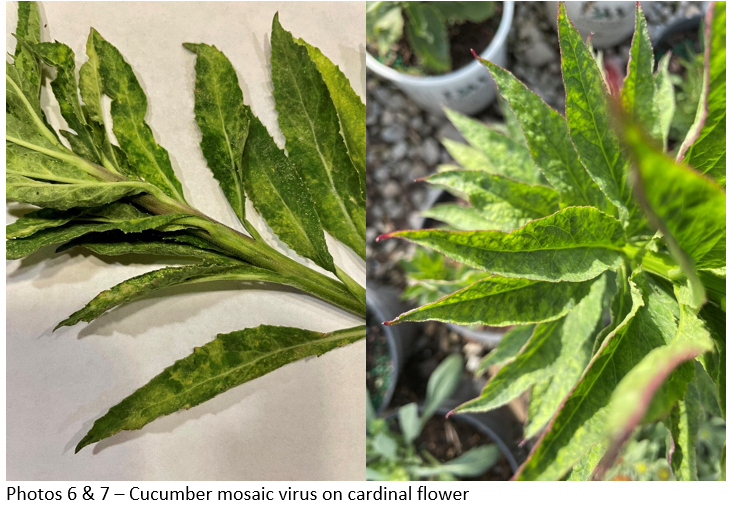
Jared Spokowsky (Nursery Inspector & Compliance Officer) -
I ran across a new invasive this past weekend. Well, maybe not new but it was the first time I’d seen it in person. Wineberry (Rubus phoenicolasius) is an invasive cane fruit from Asia that was introduced to the east coast. I found some while on a hike and decided to give them a try since they are related to our native raspberries. In my opinion, raspberries and blackberries are far better. I would say wineberry has a watered-down raspberryish taste.
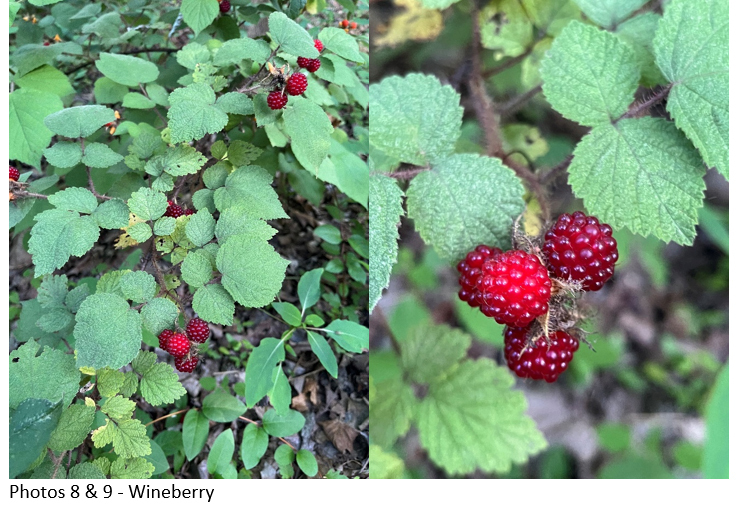
I have gotten reports from beekeepers calling me with excessive amounts of bald brood. My first question is always, “What are your mite numbers?” Bald brood is usually a symptom of Parasitic Mite Syndrome (PMS). But in multiple cases, these beekeepers have been on top of mite control or are in situations where their mite load should still be minimal. I had a local beekeeper call me with this issue, so I decided to run out and take a look. The hive was really strong. We did a mite wash which resulted in zero mites being found but the amount of uncapping was excessive - upwards of 40-50%. We were able to place some markers on certain frames and I took reference pictures. I plan on some follow-up visits which hopefully should give a little more information.
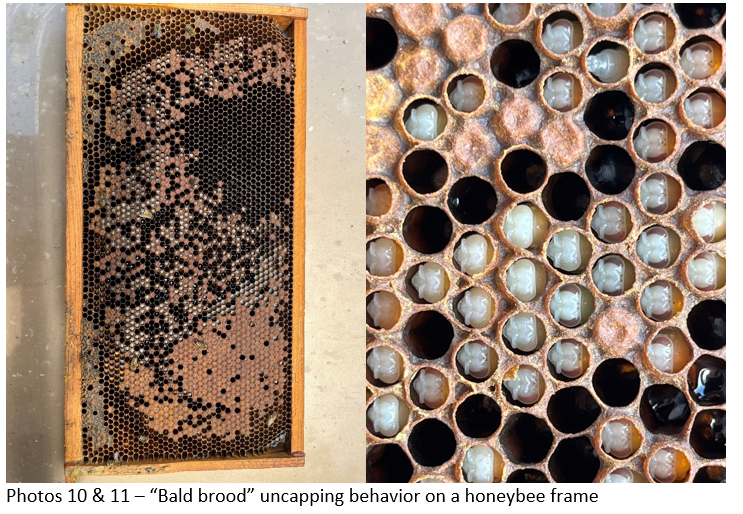
Eric Biddinger (Nursery Inspector & Compliance Officer) -
As the summer progresses, I have noticed an ever-increasing number of red headed flea beetles and the associated damage every place I visit. While not a threat to the survivability of the plants, the beetle’s damage will often make plants unsellable. If you are not scouting or managing for this critter in the nursery, I strongly suggest you start. The Purdue Landscape Report had a nice summary of control options for this insect a couple of years ago.

A few other finds from the last couple of weeks include spotty populations of Japanese beetle, increasing damage from maple spider mite, various rose leaf diseases including downy mildew and black spot, cottony maple scale, and so many leaf spots on oaks and maples. I also found a limited pocket of whitefly pupae on river birch – which I find memorable because they remind me of passionflower…
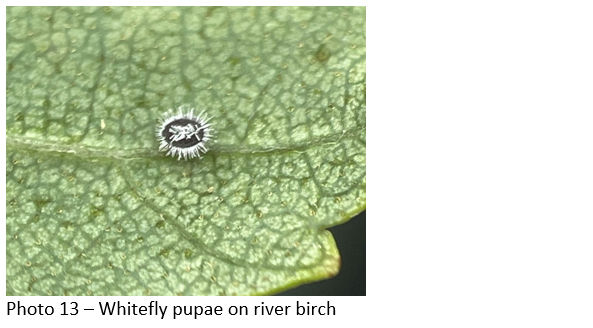
Finally, I wanted to end with a picture from a neighbor’s front yard. This was one of three Callery pears on this property that failed in a recent storm. The owners had already cleaned up the branches when I got there, but the remaining trunk tells the story of a branch union weakened by poor structure and included bark. Aside from this species’ invasive habits, its propensity to fail starting around the 15 to 20-year mark should dissuade the choice of Callery pear for landscape use. This branch failure removed nearly half of the canopy and left a gaping wound that cannot heal.

Bonnie Spindler (Nursery Inspector & Compliance Officer) -
I’m a wanderer who always enjoys checking out hedgerows, roadsides, or any wild area that might have interesting plants. Last month, a mulberry tree caught my notice. As I ambled that way, I noticed a multitude of Pastinaca sativa growing beneath it. P. sativa is also known as wild or (less commonly) poison parsnip. Don’t touch this plant! It contains toxins that cause photodermatitis. They inhibit your body’s protection from sunlight. Coming in contact with it while exposed to sunlight can cause severe blistering, rash, localized burning, and discoloration.
P. sativa is a non-native invasive weed that can be found in dry sunny areas across the state. It’s a biennial, growing close to the ground as a leafy rosette the first year and then bolting up to four feet tall, flowering, and dying the second year. It flowers from late-spring to mid-summer with hundreds of bright yellow flowers arranged in umbels. It smells similar to cultivated parsnip.
The best protection from P. sativa is avoidance regardless of what other interesting plants are nearby. If skin exposure does occur, immediately wash with soap and water and keep covered out of direct sunlight.

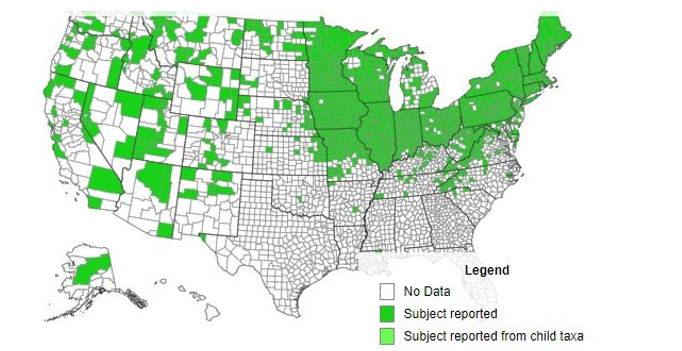
Photo 17 – EDDMaps Distribution of P. sativa, www.eddmaps.org


